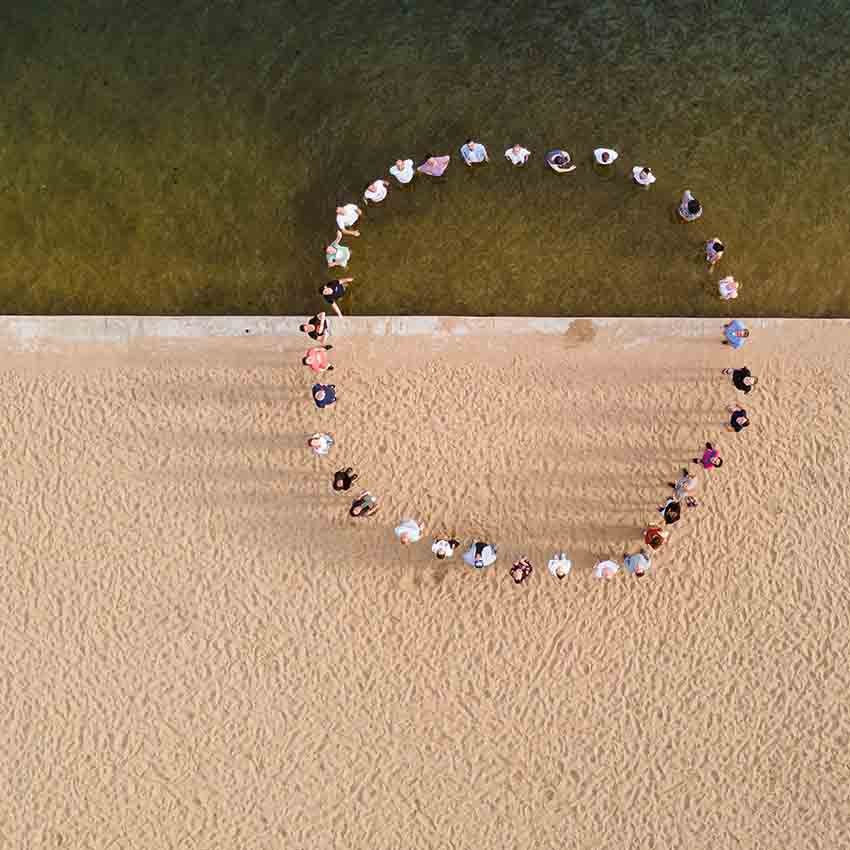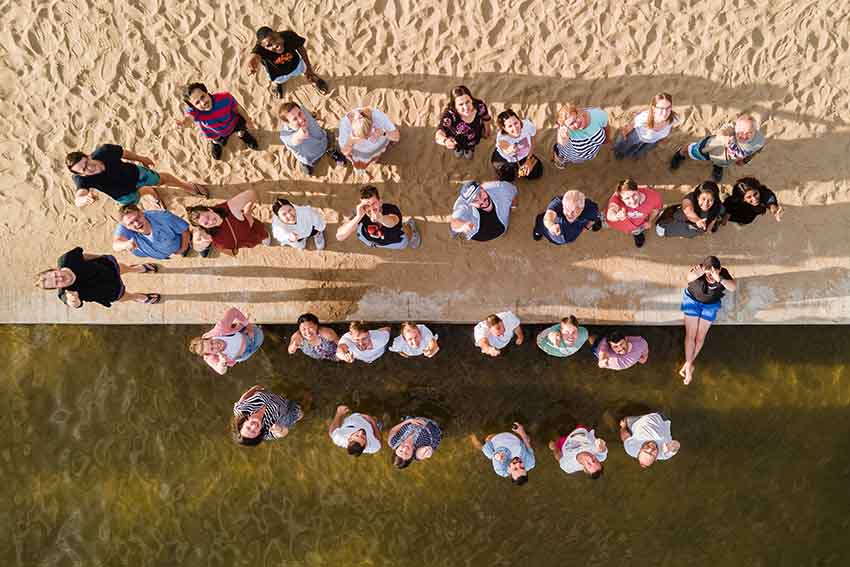Light:Guard is a sister company of Quantec Sensors, which is considered a pioneer in the field of Aircraft Detection Lighting Systems (ADLS) and developed the first concepts for transponder-based solutions as early as 2008. In 2019, these impulses were taken up again, and brought to series production readiness by the specially founded Light:Guard to create an intelligent multilateral system for transponder-based detection of aircraft.
Easy Engineering: What are the main areas of activity of the company?
Light:Guard: Light:Guard and its sister company Quantec Sensors are solution providers in the area of Aviation Detection Lighting Systems (ADLS). In short: through either a transponder system (similar to a radio transmitter) or an active radar system, we are able to monitor all air traffic (airplanes, helicopters, drones etc.) around wind farms and are therefore able to switch off their obstruction lighting systems (the red blinking lights at night or the white blinking light during the day) most of the time. To be more specific: it’s actually a fail-safe design, so our systems suppress the obstacle lights as long as there is no aircraft in the defined vicinity.
E.E: What’s the news about new products?
Light:Guard: The whole industry is relatively young, first radar based solutions were introduced in the last ten years and transponder based solutions are so far only (and only recently) ratified in Germany, even though international guidelines from ICAO and design bodies like ISO are already reflecting it. So, Germany is currently the cradle for this whole industry and several companies have emerged offering different approaches for transponder based ADLS solutions. There is a wide variety of designs: some are stand alone systems that are installed on each turbine, some are single systems for one wind farm, each have one transponder/receiver. Then there are approaches like ours where we install one system per wind farm with at least one receiver, but collect the data from all installed receivers in a central data center, process the data and then send out commands to each wind farm. The system architecture is more complex but since everything is connected, we achieve a grid coverage and therefore better knowledge about the exact positions of all aircraft and hence better signal quality and higher “lights-off” times for each wind farm. Time will tell which approach is best.

E.E: What are the ranges of products?
Light:Guard: We offer the customer the complete ADLS solution from a single source:
- Development & production of the transponder-based light:guard ADLS
- Equipment of appropriately upgraded wind farms with the light:guard system
- Provision of ADLS signals according to the principle of a telecommunication contract
- Maintenance of the light:guard system during operation
- Support of the approval procedure at the responsible authority
E.E: At what stage is the market where you are currently active?
Light:Guard: We currently see a massive first-time rollout in the German market, with about 13.000 wind turbines being regulated by systems like ours. This is quite a challenge for the whole wind industry at the moment, since the lights of all these turbines have to be regulated by the end of 2023. Not an easy undertaking considering Germany has one of the oldest and most diverse wind turbine markets as well as a wide range of different topography. But from what I can tell, all market players, products and processes have professionalized strongly over the last years and are likely to achieve the deadline at the end of this year, meaning all concerning windfarms will not be having the usual light emissions at night and by day which is a great achievement for emission protection overall, but also a relief for residents.

E.E: What can you tell us about market trends?
Light:Guard: This technology is here to stay. Germany has been the pioneer for a lot of environmental protection topics and has set the standards for technology quite often and I expect this to be no exception here. As the demand for clean wind energy grows and available space becomes scarcer, wind turbines will become a more common picture everywhere and therefore are also more likely to create friction with residents and nature alike. Only by setting high standards and reducing emissions to a reasonable low, we can make sure the wind turbine industry can grow properly. Currently, we already see that other European countries are engaged in law changes to allow or even mandate this technology. Over time, I also expect that there will be a demand for all systems fulfilling a certain quality, which is currently not yet in place. This means that all systems have to prove that they work, but not how well they are working, and I think this will change in the upcoming years with experience in the market and all products being benchmarked against each other.
E.E: What are the most innovative products marketed?
Light:Guard: The innovation really is in the system architecture of all products since most elements themselves have already been existing before (transponder as a technology is not really new). So a lot of the innovation at the moment is how to best combine available technology and especially on the software side, how to best process and value the received signals. Another aspect is how to make it flexible enough to be adapted to all wind turbine manufacturers on the market and to all of their turbine types or platforms. From what I can see, all German companies that offer a solution in the ADLS industry did their homework, all of them seem to have innovative products, but so far we have seen too little results in what their performance looks like so I’m looking forward to see them all being benchmarked against one another to see results.

E.E: What estimations do you have for 2023?
Light:Guard: 2023 will be the make-or-break year for the industry. We have until the end of the year to install all of our systems in Germany. With the beginning of 2024 all wind turbines here (with few exceptions) will have to be equipped with a system. A lot of other countries (The Netherlands and Austria for example) are eying on our market to see how this idea plays out. If we perform well here, the technology will likely be adapted in other countries. If we do not perform well, it will definitely result in prolonged discussions. But I’m optimistic that this will be a technology for the whole world and a good approach to reducing light emissions everywhere.

